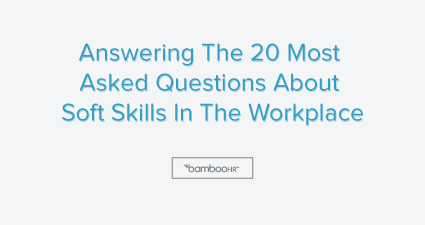Employee Management Software
What Is Employee Management Software?
Employee management software is a digital filing cabinet HR professionals use to store their employee database. Critical employee data, including name, job position, salary, hire date, and other work-related information can all be housed in an employee management system.
The five main reasons for creating and maintaining an employee database within employee management software are to:
- Comply with personal information security regulations
- Increase the HR department’s accuracy and productivity
- Evaluate employee data for ensuring fair compensation
- Track instances of disciplinary action or grievances
- Use HR analytics to help management make strategic business decisions
Manage employee data the easy way.
Say goodbye to outdated spreadsheets and hello to centralized employee records! From electronic signatures to tax documents, BambooHR keeps employee data organized and secure.
What Is an HR Database?
The term “HR database” can be used interchangeably with “employee database.” In other words, an HR database is used to track relevant employee information, such as recruitment details, qualifications and special designations, past and current salary, performance reviews, etc.
How Do You Create an Employee Database?
There are various ways to create an employee database, the most common being:
- Paper documents stored in a locked file cabinet
- Spreadsheets, word processing documents, and database software stored on a company server or computer’s hard drive
- Cloud-based employee management software
Why Is Employee Management Software Necessary?
Housing your employee database on paper and or as documents on a company server isn’t ideal, as they’re cumbersome to create, maintain, secure, and use. They’re also prone to data loss, entry errors, constant updates, and non-compliance with federal information privacy requirements.
Cloud-based employee management software is quickly becoming the norm due to its centralized control, automated functions, ease of use, in-depth reporting capabilities, and strong security features.
What Should Be Included in an Employee Database?
An employee database should record and track a variety of employee data, including:
- Name, birth date, address, and contact information
- Job position, hire date, and employment contract
- Salary, bonuses, annual pay reviews, and bank account information
- Standard working hours, clock-in and clock-out times, and time tracking
- Benefits details, PTO dates, and leave records (FMLA, disability, military, etc.)
- Performance reviews and evaluations
- Trainings, certifications, licenses, and permits
- Personal details, such as hobbies and interests
How Do You Manage an Employee Database?
Here are a few crucial rules for properly managing an employee database:
- Retain employee records in compliance with all state and federal laws governing employee record retention and destruction.
- Keep all employee medical records separate from other employee data to help prevent discrimination according to Title I of the ADA.
- Limit full employee database access to HR staff and designated managers. State law and company policy determine an employee’s right to access their own personnel file.
In addition to employee database laws and regulations, there should be a company policy for:
- Controlling the creation and accessibility of records
- Securing data against breach according to current FTC protecting personal information guidelines
- Maintaining a backup and recovery plan in case of emergency data loss
How Do You Maintain Employee Data with Employee Management Software?
Employee database software eliminates home-grown spreadsheets and compiles all employee information in a more secure, convenient and efficient system. This makes it easier for a company to remain compliant with laws, regulations, and policies.
Some of the functions an employee management app performs are:
- Automating data transfer and record input
- Eliminating entry errors
- Producing customs reports
- Controlling access
- Storing records and preserves data security
- Training new database users
There are benefits to these features, namely:
- Scalability: It allows employers the flexibility to onboard and offboard employees quickly on an as-needed basis.
- Efficiency: Since the software is on the cloud, you can access real-time key data anywhere, at any time.
- Knowledge: HR professionals are better able to analyze and strategize based on HR analytics, making them a great resource for company leaders when it’s time to make decisions.
- Empowerment: Employees enter much of their own data, removing a massive time and cost burden from HR staff, even as HR remains in full control of sensitive personnel and company data.

Increasingly, the soft skills inside your organization are becoming the primary drivers of success. Learn what soft skills are & how they incorporate into your job.

Whether you're aware or not, spreadsheets can hold you captive. Learn 12 ways they keep you from doing the important work you want to do, and more importantly, how to break free.